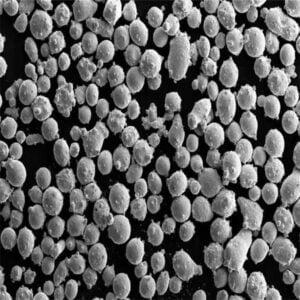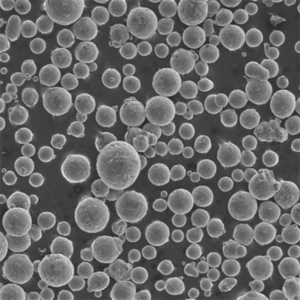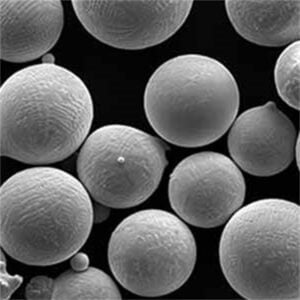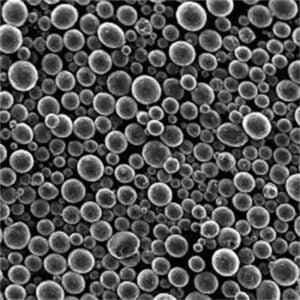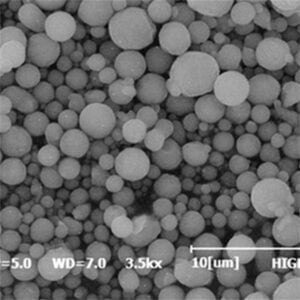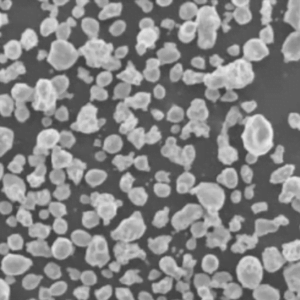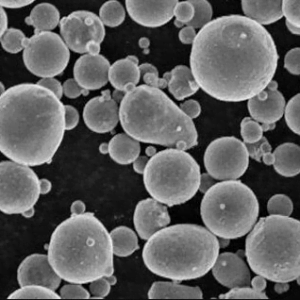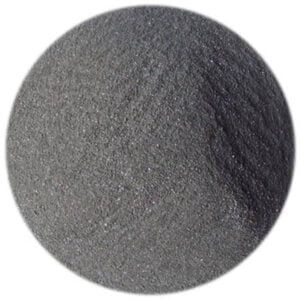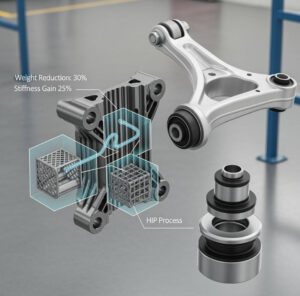Stainless Steel 17-4PH Powder in 2024
Innehållsförteckning
Översikt
Stainless steel 17-4PH powder is a precipitation hardening martensitic stainless steel that can be used for metal 3D printing. It has high strength and hardness coupled with good corrosion resistance. 17-4PH contains approximately 4% copper which enables age hardening of the alloy through precipitation of copper-rich particles.
This article provides an overview of 17-4PH powder including its composition, properties, processing, applications, suppliers, and comparisons to other alloys. Key details are summarized in the tables below.
17-4PH Powder Composition
17-4PH gets its name from its composition which includes approximately 4% copper. The main alloying elements are:
| Element | Vikt % |
|---|---|
| Krom | 15 – 17.5% |
| Nickel | 3 – 5% |
| Koppar | 3 – 5% |
| Mangan | ≤ 1% |
| Kisel | ≤ 1% |
| Kol | ≤ 0.07% |
| Sulfur & Phosphorus | ≤ 0,04% |
| Kväve | ≤ 0,03% |
The copper content results in precipitation hardening which increases the strength and hardness of 17-4PH substantially. The chromium provides corrosion resistance. Nickel also boosts corrosion resistance while enhancing ductility and toughness.
17-4PH Powder Properties
17-4PH powder offers an excellent combination of high strength and good corrosion resistance. Key properties include:
| Fastighet | Beskrivning |
|---|---|
| Styrka | Tensile strength up to 1,380 MPa, yield strength up to 1,240 MPa |
| Hårdhet | Up to 44 HRC after aging |
| Motståndskraft mot korrosion | Better than 400 series stainless steels due to copper |
| Bearbetbarhet | More difficult to machine than 300 series due to higher strength |
| Magnetism | Slightly magnetic due to martensitic microstructure |
| Svetsbarhet | Lower weldability than 300 series due to precipitation hardening |
The strength, hardness, and corrosion resistance can be tailored through heat treatment. Solution annealing renders the alloy soft and ductile. Subsequent aging induces precipitation of copper-rich particles which impedes dislocation movement, thereby hardening and strengthening the material.
17-4PH Processing
17-4PH powder can be processed via several metal 3D printing methods:
- Fusion av laserpulverbäddar (L-PBF)
- Fusion av pulverbäddar med elektronstråle (E-PBF)
- Deposition med riktad energi (DED)
L-PBF is one of the most common approaches. Process parameters must be carefully controlled to achieve dense, crack-free parts and avoid residual stresses.
Typical processing conditions for 17-4PH powder in L-PBF:
- Skikttjocklek: 20-50 μm
- Laser power: 100-400 W
- Scan speed: 100-1500 mm/s
- Avstånd mellan luckorna: 80-120 μm
- Stråldiameter: 50-100 μm
A stress relief heat treatment is recommended after printing to relieve residual stresses. The printed parts can be solution annealed and aged to increase hardness and strength.
17-4PH Applications
17-4PH is used for metal 3D printed parts requiring high strength, hardness, and moderate corrosion resistance across a variety of industries:
- Aerospace: Turbine blades, impellers, fasteners, brackets
- Automotive: Transmission components, turbocharger parts
- Oil & gas: Valves, wellhead parts, pumps
- General engineering: Tooling, fixtures, molds
The high hardness after aging makes 17-4PH suitable for wear-resistant applications. It can substitute for hard-to-machine materials like tool steels for injection molds and dies. The alloy is commonly used for high-strength structural brackets and housings.
17-4PH Powder Suppliers
17-4PH powder is commercially available from leading metal powder manufacturers:
| Leverantör | Produktkvaliteter | Storleksintervall |
|---|---|---|
| Sandvik | Osprey 17-4PH | 15-45 μm |
| Snickare | 17-4PH | 15-45 μm |
| Praxair | 17-4 PH | 15-53 μm |
| LPW-teknik | 17-4PH | 15-45 μm |
| Erasteel | 17-4 PH | 20-150 μm |
Prices range from $50/lb to $90/lb depending on quantity ordered. Custom particle size distributions and high purity grades (e.g. phosphate passivated) are available.
17-4PH vs Other Alloys
17-4PH compares to stainless steel and tool steel alloys as follows:
| Legering | Styrka | Motståndskraft mot korrosion | Kommentarer |
|---|---|---|---|
| 17-4PH | Mycket hög | Måttlig | Precipitation hardening; high hardness; good strength and corrosion resistance combination |
| 316L | Medium | Utmärkt | Standard corrosion resistant stainless; low strength; not heat treatable; cheaper |
| PH 13-8 | Hög | Utmärkt | Precipitation hardening; high strength and corrosion resistance; contains 8% nickel |
| H13 Verktygsstål | Mycket hög | Måttlig | Standard tool steel; high hardness but lower corrosion resistance; more expensive |
VANLIGA FRÅGOR
What are the main advantages of 17-4PH stainless steel?
The main advantages of 17-4PH are its high strength and hardness coupled with moderate corrosion resistance. Hardness values up to 44 HRC are possible through aging. It offers substantially higher strength than 300 series stainless steels.
What is 17-4PH stainless steel used for?
Common applications of 17-4PH include structural components like brackets and housings, wear-resistant parts, plastic injection molds and dies, impellers, valves, and aerospace components. It is widely used across aerospace, oil & gas, automotive, and general engineering.
Why is 17-4PH suitable for metal 3D printing?
17-4PH has low thermal conductivity and coefficient of thermal expansion, making it less prone to residual stress and cracking during printing. Its high hardness enables printing of wear resistant tooling. The alloy is commonly available in powder form.
What heat treatment is used for 17-4PH?
17-4PH is typically solution annealed at 1038-1066°C then aged at 371-427°C to precipitate copper-rich particles. This causes the alloy to harden and strengthen substantially. Stress relieving prior to heat treatment is recommended.
How does 17-4PH compare to 316L and H13 tool steel?
17-4PH has much higher strength and hardness than 316L stainless steel but lower corrosion resistance. Compared to H13 tool steel, 17-4PH offers better corrosion resistance with slightly lower hardness. 17-4PH provides a good balance between hardness, strength, and corrosion resistance.
What precautions are needed when 3D printing 17-4PH?
Careful process parameter selection and stress relieving between layers is important to minimize residual stresses and cracking. Print orientation, support structures, and resolution/layer height must also be optimized for complex geometries.
What suppliers offer 17-4PH powder?
Leading suppliers of 17-4PH powder include Sandvik, Carpenter Additive, Praxair, LPW Technology, and Erasteel. Powder is available in different size distributions customized for AM processes like DED and L-PBF.
Vanliga frågor och svar (FAQ)
1) What powder specs matter most for Stainless Steel 17-4PH Powder in LPBF?
- Spherical 15–45 µm PSD, low satellites, O ≤0.05–0.10 wt%, N ≤0.03 wt%, H ≤0.005 wt%, Hall/Carney flow within spec, and consistent apparent/tap density for stable spreadability and high relative density.
2) Which heat-treatment condition is best for AM 17-4PH: H900, H1025, or H1150?
- H900 maximizes strength/hardness but reduces toughness; H1025 balances strength and toughness for general structural parts; H1150/H1150M improves toughness and stress-corrosion cracking resistance for pressure-retaining or vibration-loaded parts.
3) Do LPBF parts require HIP for 17-4PH?
- HIP is recommended for fatigue/leak-critical parts to close internal porosity and improve fatigue life; many non-critical brackets achieve ≥99.5% density as-built without HIP using tuned parameters.
4) How does powder reuse affect properties?
- Reuse can increase O/N pickup and PSD drift, impacting density and ductility. Implement sieving, O/N/H monitoring, exposure time logs, and blend with virgin powder (e.g., 20–30%) to maintain specification and consistency.
5) Are AM 17-4PH properties comparable to wrought?
- Yes, with qualified parameters and proper heat treatment. Post-H900/H1025 conditions typically meet or exceed wrought-strength levels; verify through tensile, hardness, impact, and corrosion testing per applicable specs.
2025 Industry Trends
- Parameter sets by OEMs: Wider availability of validated LPBF build recipes for 17-4PH targeting near-zero lack-of-fusion with improved contour/remelt strategies and optimized gas flow.
- Low-N variants: Increased supply of Nb-stabilized/low-nitrogen powder cuts to reduce δ-ferrite and improve toughness post-aging.
- Sustainability and circularity: Powder take-back/reconditioning with certified O/N/H restoration; argon recirculation and closed-loop powder handling.
- Binder jetting maturation: Finer cuts (5–25 µm) with tailored debind/sinter schedules deliver 96–98% density as-sintered; HIP for pressure service.
- Data-rich CoAs: Standard inclusion of PSD raw data, O/N/H trends, SEM morphology, and exposure-time logs to accelerate PPAP/FAI.
2025 Snapshot: Stainless Steel 17-4PH Powder KPIs
| Metric (2025e) | Typical Value/Range | Notes/Source |
|---|---|---|
| LPBF PSD | D10 15–20 µm; D50 25–35 µm; D90 40–50 µm | ISO/ASTM 52907 context |
| Interstitials (AM-grade) | O ≤0.05–0.10 wt%; N ≤0.03 wt%; H ≤0.005 wt% | Supplier CoAs |
| As-built relative density | ≥99.5% with tuned parameters | CT verification |
| Post-HIP density | ≥99,9% | Leak-/fatigue-critical |
| Typical UTS (H900) | ~1,100–1,300 MPa | Spec- and process-dependent |
| Typical UTS (H1025) | ~1,000–1,150 MPa | Higher toughness |
| Price band (powder) | ~$25–$60/kg (region/volume/spec) | Market quotes 2024–2025 |
| Ledtid | 3–7 weeks stocked; 8–12 weeks MTO | Supplier disclosures |
Authoritative sources:
- ISO/ASTM 52907; ASTM F3049 (powder characterization): https://www.astm.org, https://www.iso.org
- ASTM A564/A693 (17-4PH bars/plates), AMS 5643/5604 (17-4PH), SAE/AMS heat-treatment callouts
- ASM Handbook Vol. 7 (Powder Metallurgy), Vol. 4 (Heat Treating): https://www.asminternational.org
- AMPP/NACE corrosion resources: https://www.ampp.org
Latest Research Cases
Case Study 1: LPBF 17-4PH H1025 Brackets for Offshore Wind (2025)
- Background: An offshore OEM needed corrosion-resistant, high-strength brackets with reduced lead time and consistent fatigue performance in a marine environment.
- Solution: Adopted AM-grade Stainless Steel 17-4PH Powder (D50 ~32 µm, O 0.06 wt%); tuned contour+remelt strategy; stress relief → HIP → H1025; passivated per ASTM A967.
- Results: Relative density ≥99.9% post-HIP; UTS 1,090 MPa, elongation 12%; salt-spray performance on par with wrought; fatigue life at R=0.1 improved 20% vs. as-built + H1025 without HIP; lead time −35%.
Case Study 2: Binder-Jetted 17-4PH Tooling Inserts with Conformal Cooling (2024/2025)
- Background: A molding supplier sought cycle-time reduction and wear resistance without expensive H13.
- Solution: Used 5–20 µm powder; solvent debind + high-purity H2/N2 sinter; selective HIP for high-pressure inserts; H900 aging; abrasive flow machining for channels.
- Results: As-sintered density 97–98%; HIPed parts ≥99.7%; cycle time −18% via conformal channels; wear rate −25% vs. conventional 420 stainless insert after 100k shots.
Expertutlåtanden
- Dr. John A. Slotwinski, Additive Manufacturing Metrology Expert (former NIST)
- Viewpoint: “For 17-4PH, monitoring interstitials and PSD tails across reuse cycles is as vital as density measurements to ensure repeatable mechanical properties.”
- Prof. Tresa M. Pollock, Distinguished Professor of Materials, UC Santa Barbara
- Viewpoint: “HIP plus appropriate aging (H1025/H1150) offers a robust path to wrought-comparable fatigue performance while mitigating lack-of-fusion defects.”
- Dr. Christina Bertulli, Director of Materials Engineering, EOS
- Viewpoint: “Validated process maps and data-rich CoAs are shortening time-to-qualification for Stainless Steel 17-4PH Powder in energy and industrial sectors.”
Practical Tools/Resources
- Standards and specs: ISO/ASTM 52907; ASTM F3049; ASTM A564/A705; AMS 5643/5604 for property targets and heat-treatment guidance
- Corrosion testing: ASTM A967/A380 (passivation), ASTM G48 (pitting), ASTM B117 (salt spray) for comparative screening
- Metrology: Inert gas fusion (O/N/H), laser diffraction (PSD), SEM for morphology, CT for porosity, tensile per ASTM E8, hardness per ASTM E18
- Process control: Gas purity monitoring (O2 <100 ppm), contour+remelt scan strategies, powder reuse SOPs with exposure tracking and sieving, SPC on density/mechanicals
- Design/simulation: Ansys/Simufact Additive for distortion/supports; lattice and topology optimization for weight and cooling-channel design
Implementation tips:
- Choose heat-treatment condition to match performance needs: H900 for max strength; H1025 for balanced properties; H1150 for improved toughness/SCC resistance.
- Specify CoA with chemistry incl. interstitials, PSD (D10/D50/D90), SEM morphology, flow/tap/apparent density, moisture/LOD, and lot genealogy.
- Plan HIP for fatigue- or leak-critical parts; validate density with CT and confirm corrosion via passivation + targeted tests (G48/B117).
- Control powder reuse: set cycle limits, blend with virgin, and monitor O/N/H and PSD drift to maintain consistency.
Last updated: 2025-10-13
Changelog: Added focused 5-question FAQ, 2025 KPI table for AM-grade 17-4PH, two recent case studies (LPBF offshore brackets and binder-jetted tooling inserts), expert viewpoints, and practical tools/resources with implementation tips
Next review date & triggers: 2026-04-20 or earlier if ISO/ASTM/AMS standards update, supplier CoA practices change, or new data on HIP/aging effects and powder reuse for 17-4PH AM is published
Dela på
MET3DP Technology Co, LTD är en ledande leverantör av lösningar för additiv tillverkning med huvudkontor i Qingdao, Kina. Vårt företag är specialiserat på 3D-utskriftsutrustning och högpresterande metallpulver för industriella tillämpningar.
Förfrågan för att få bästa pris och anpassad lösning för ditt företag!
Relaterade artiklar
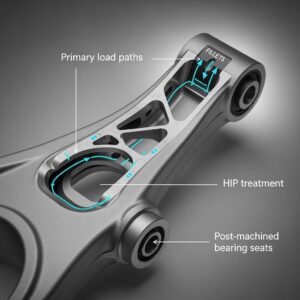
Metal 3D Printing for U.S. Automotive Lightweight Structural Brackets and Suspension Components
Läs mer "Om Met3DP
Senaste uppdateringen
Vår produkt
KONTAKTA OSS
Har du några frågor? Skicka oss meddelande nu! Vi kommer att betjäna din begäran med ett helt team efter att ha fått ditt meddelande.







